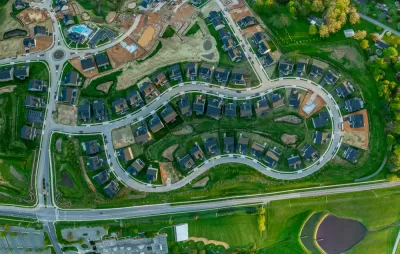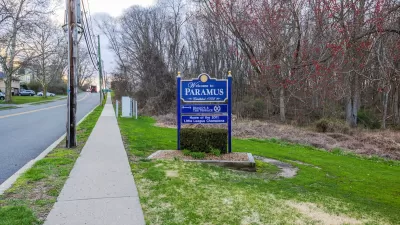Zoning regulations designed to boost the housing supply for families have contributed to a housing crisis that makes housing costs a major burden for many American families.

In a piece in Discourse Magazine, Emily Hamilton describes how U.S. zoning laws are contributing to the affordability crisis and making housing a top concern for many families, particularly those who rent. “A great irony of U.S. housing policy is that regulations that are causing worsening affordability problems for families, such as single-family zoning, were once touted as a path to abundance of the type of housing best for children.”
As Hamilton explains, zoning and land use reforms could have impacts that ripple beyond just housing supply, affecting everything from carbon emissions to economic development. “Freeing homebuilders to serve a wider variety of households at a broad range of incomes is the path to abundant housing. And in the process, we might find that less rigidly planned neighborhoods have benefits for children that extend beyond housing affordability.”
Hamilton provides a history of residential zoning in the United States, where regulations on housing are some of the strictest in the world. “Nowhere else on earth mandates the low densities that U.S. single-family zoning and lot size requirements combine to create in urban areas,” Hamilton writes. Even where multifamily housing exists, units are often too small for many families, in part because of two-staircase requirements.
For renter families, housing costs have grown by 34 percent since 1980. “Policies that were framed as creating an abundance of housing best-suited for child-rearing have led to housing scarcity that perversely affects households with children more than others.” In some cities, the lack of affordable housing for families has led to a sharp decline in the number of children living there. According to Hamilton, “Allowing apartments to be built in more places would reduce families’ competition for large units by creating opportunities for more people to rent their own apartments rather than sharing large units with roommates.” More multifamily construction and affordable, family-sized housing can help families stay in communities that are closer to jobs, transit, schools, parks, and more.
FULL STORY: Zoning Out American Families

Planetizen Federal Action Tracker
A weekly monitor of how Trump’s orders and actions are impacting planners and planning in America.

Chicago’s Ghost Rails
Just beneath the surface of the modern city lie the remnants of its expansive early 20th-century streetcar system.

San Antonio and Austin are Fusing Into one Massive Megaregion
The region spanning the two central Texas cities is growing fast, posing challenges for local infrastructure and water supplies.

Since Zion's Shuttles Went Electric “The Smog is Gone”
Visitors to Zion National Park can enjoy the canyon via the nation’s first fully electric park shuttle system.

Trump Distributing DOT Safety Funds at 1/10 Rate of Biden
Funds for Safe Streets and other transportation safety and equity programs are being held up by administrative reviews and conflicts with the Trump administration’s priorities.

German Cities Subsidize Taxis for Women Amid Wave of Violence
Free or low-cost taxi rides can help women navigate cities more safely, but critics say the programs don't address the root causes of violence against women.
Urban Design for Planners 1: Software Tools
This six-course series explores essential urban design concepts using open source software and equips planners with the tools they need to participate fully in the urban design process.
Planning for Universal Design
Learn the tools for implementing Universal Design in planning regulations.
planning NEXT
Appalachian Highlands Housing Partners
Mpact (founded as Rail~Volution)
City of Camden Redevelopment Agency
City of Astoria
City of Portland
City of Laramie





























